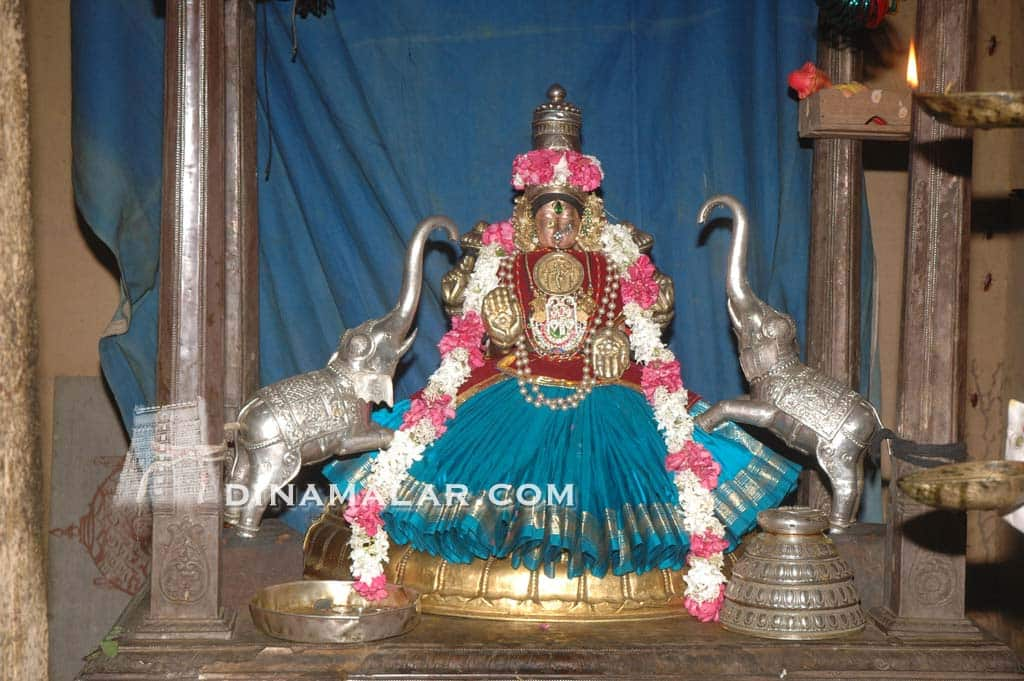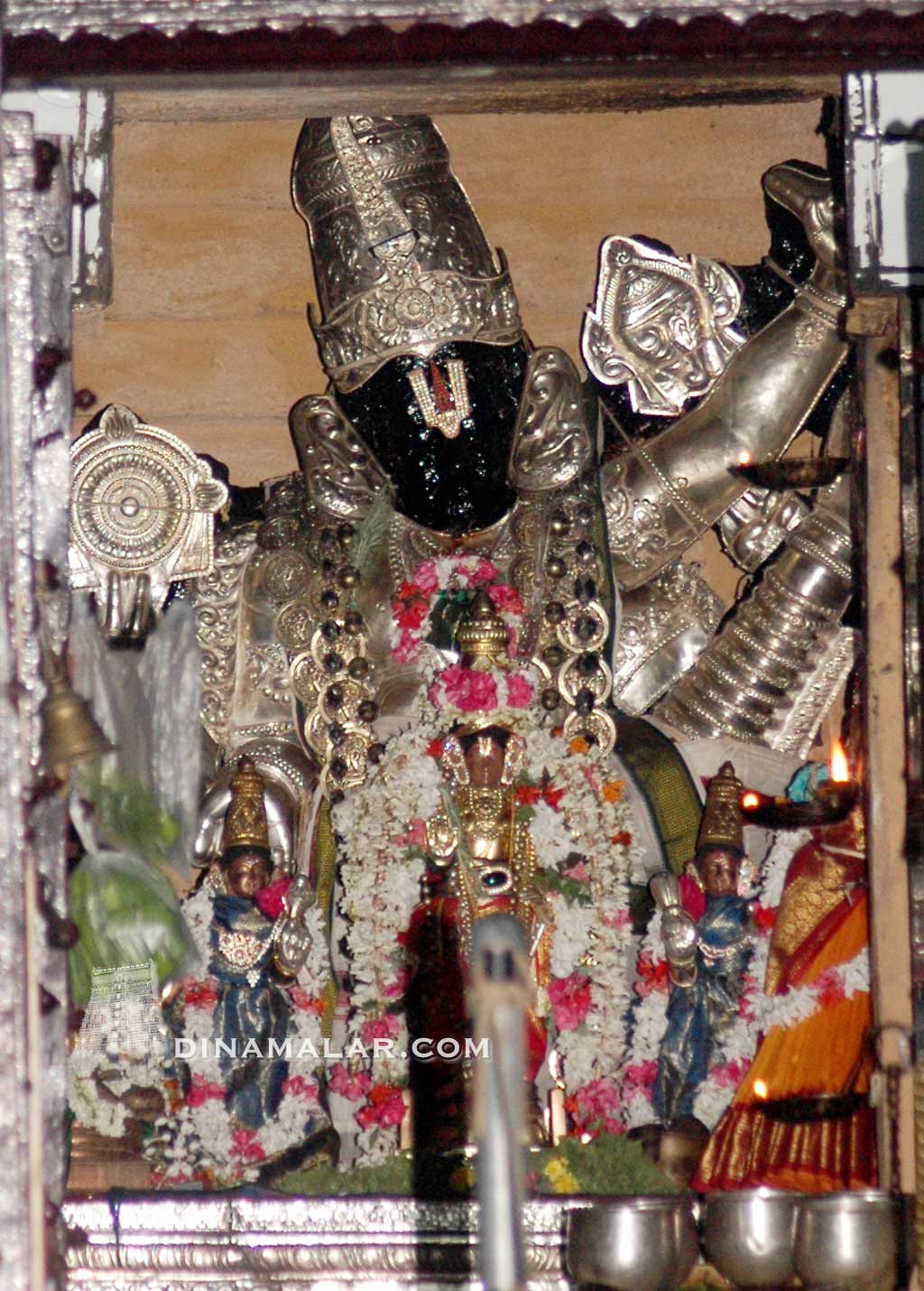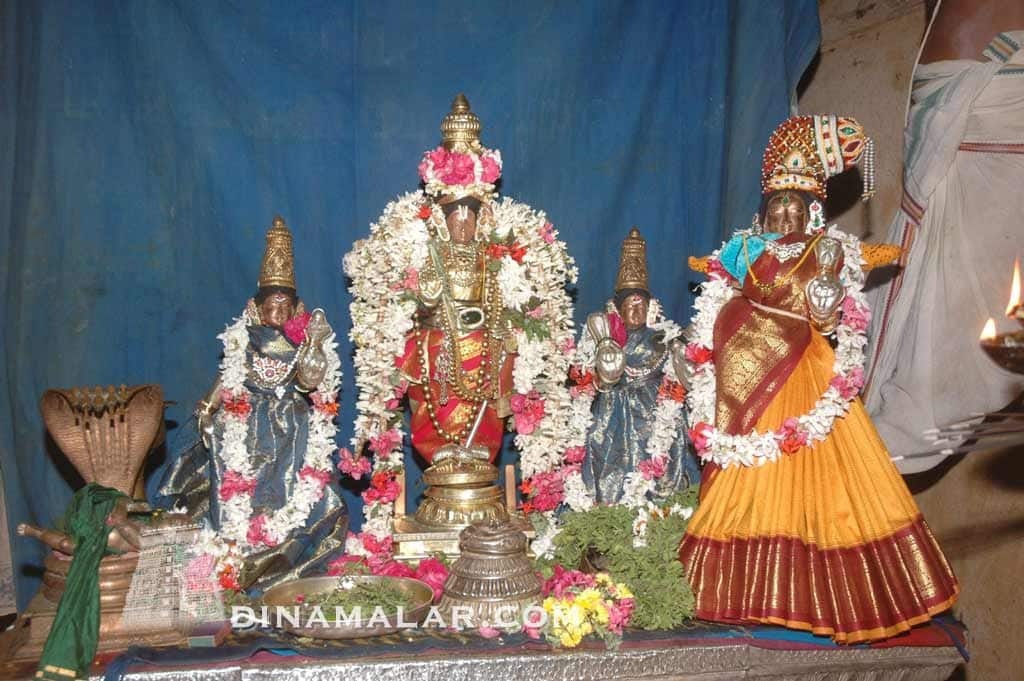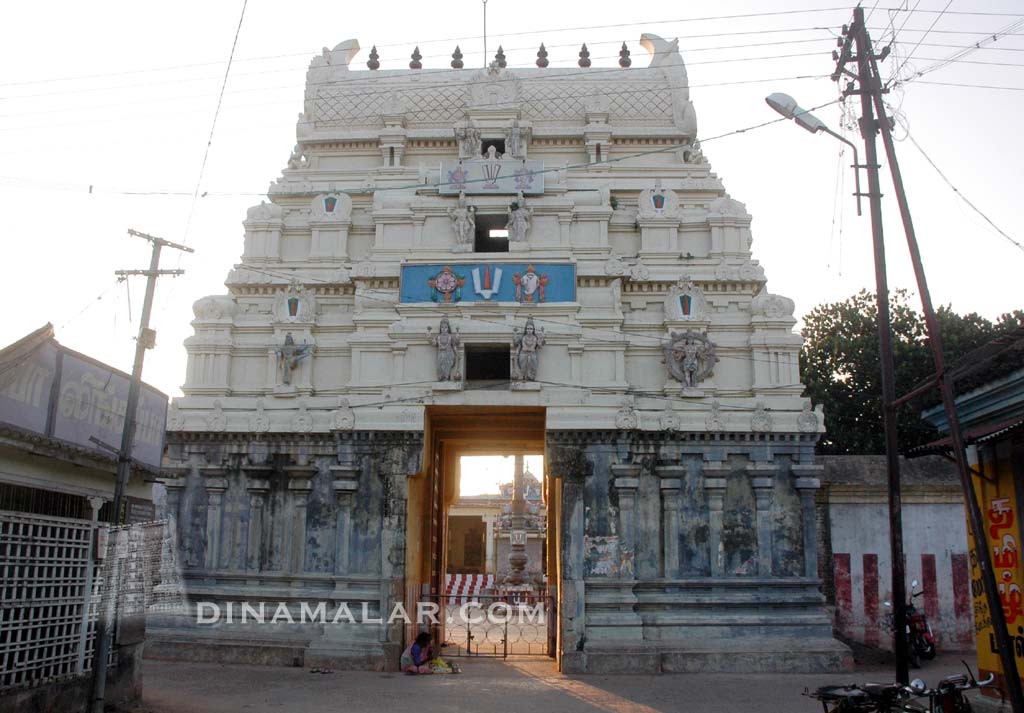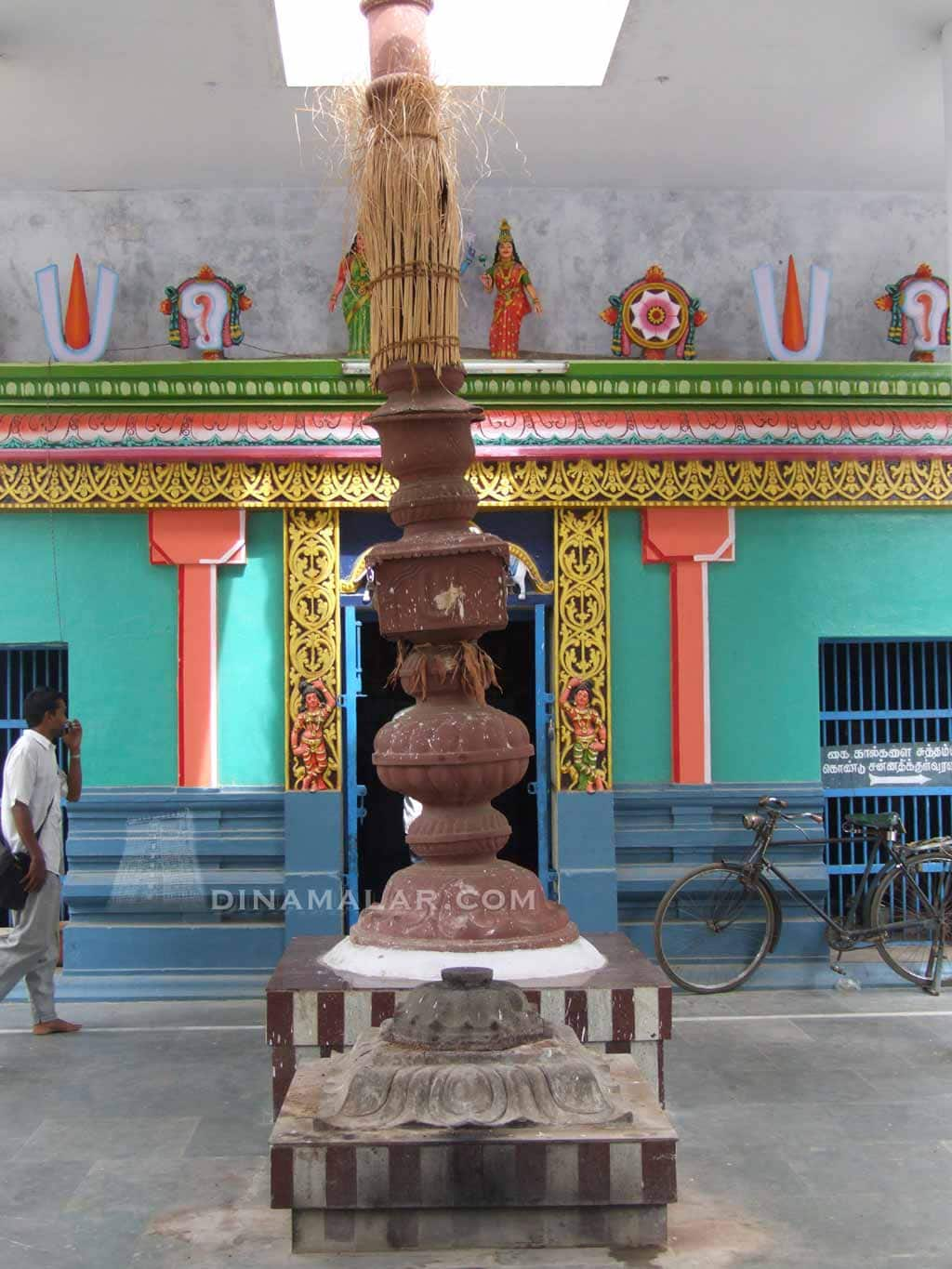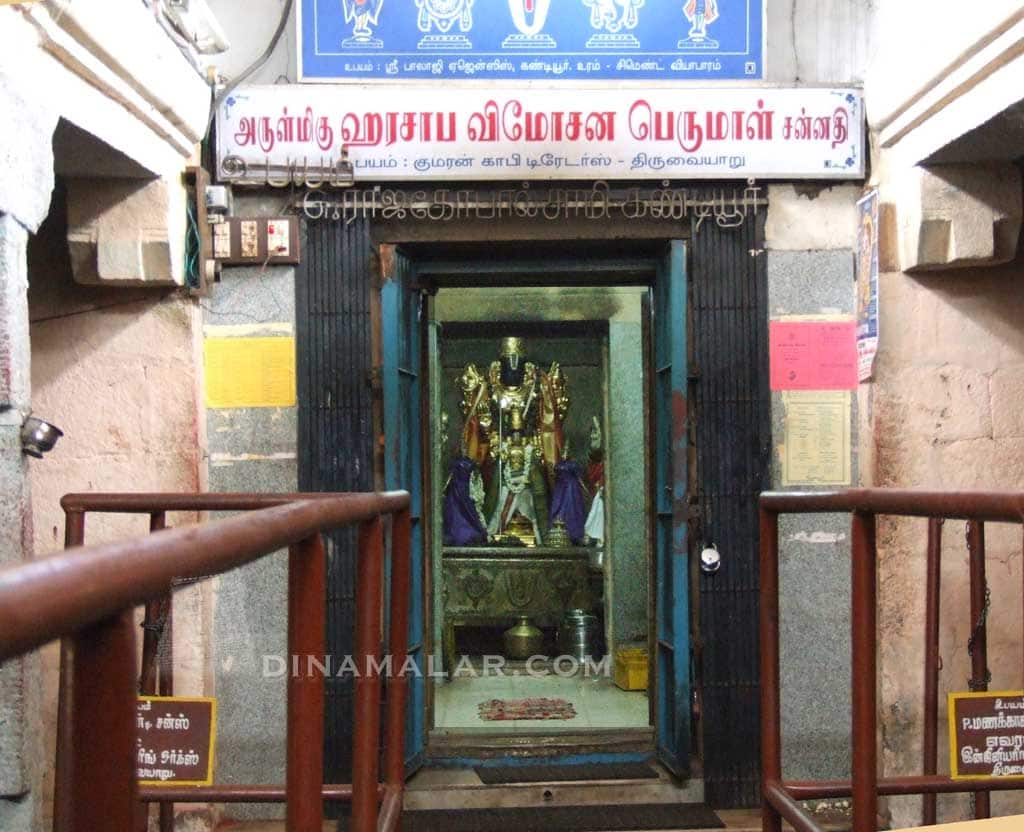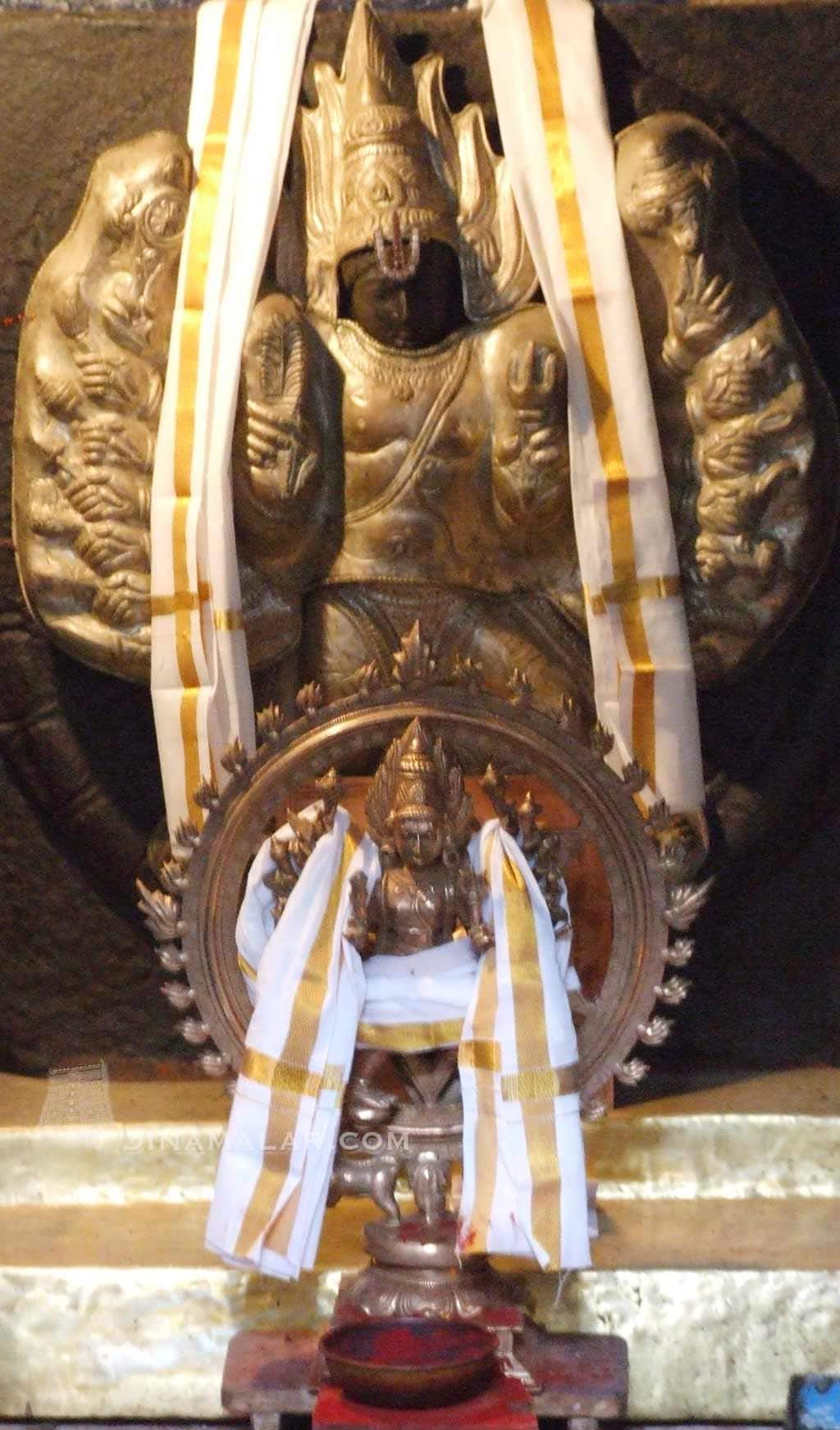GITA 9.15
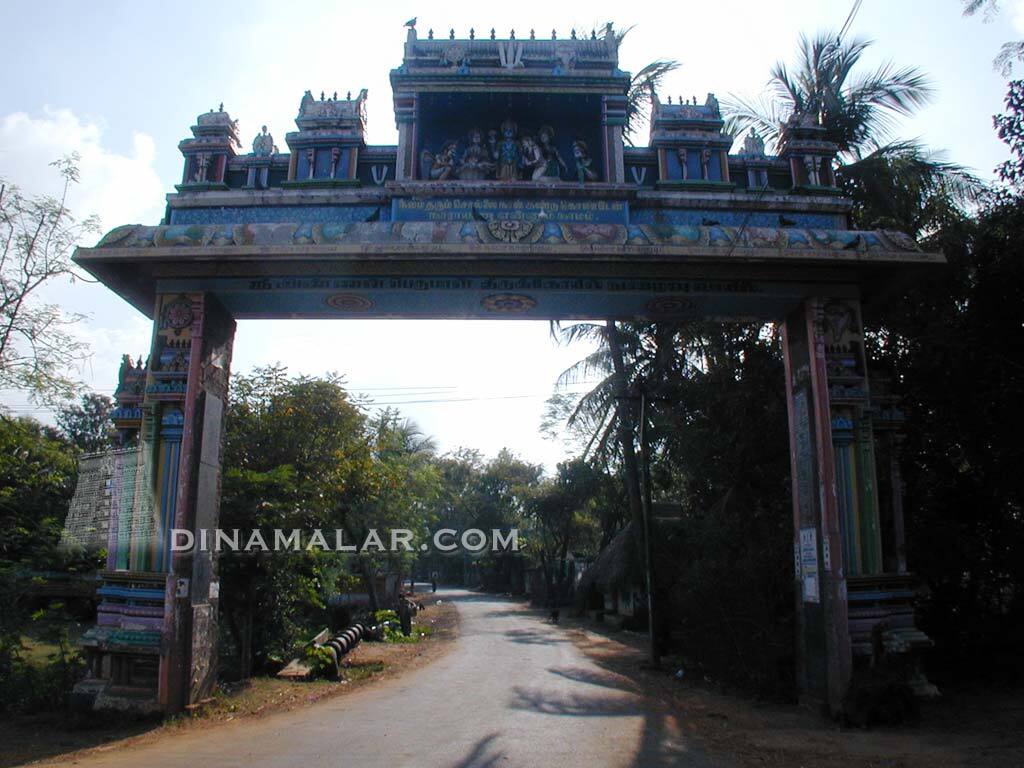 |
| ENTRANCE TO SRI ANNAN KOIL |
Parithranayasadhoonam vinasayachadushkrutham
Dharmasamsthabanarthaya sambavami yugeyuge|
 |
| TIRUVELLAKKULAM TEMPLE |
The Kshetram is also known as Thiruvellakkulam [திரு வெள்ளக் குளம்]. He is also known as Sri Srinivasa. Tirumangai Alwar says 'thinnaar madhil soozhthirvellakkulatthu anna' [திண்ணார் மதிள் சூழ் திருவெள்ளக் குளத்து அண்ணா]. He prays to get all his obstacles removed. Just like an elder brother has the duty to remove the sorrows of younger, or a master clears the obstacles for the servant, the Lord should remove his miseries, prays the Alwar. The pushkarini here is called Swetha [white] pushkarini [pond] and in Tamil, this got the name vellai + kulam.
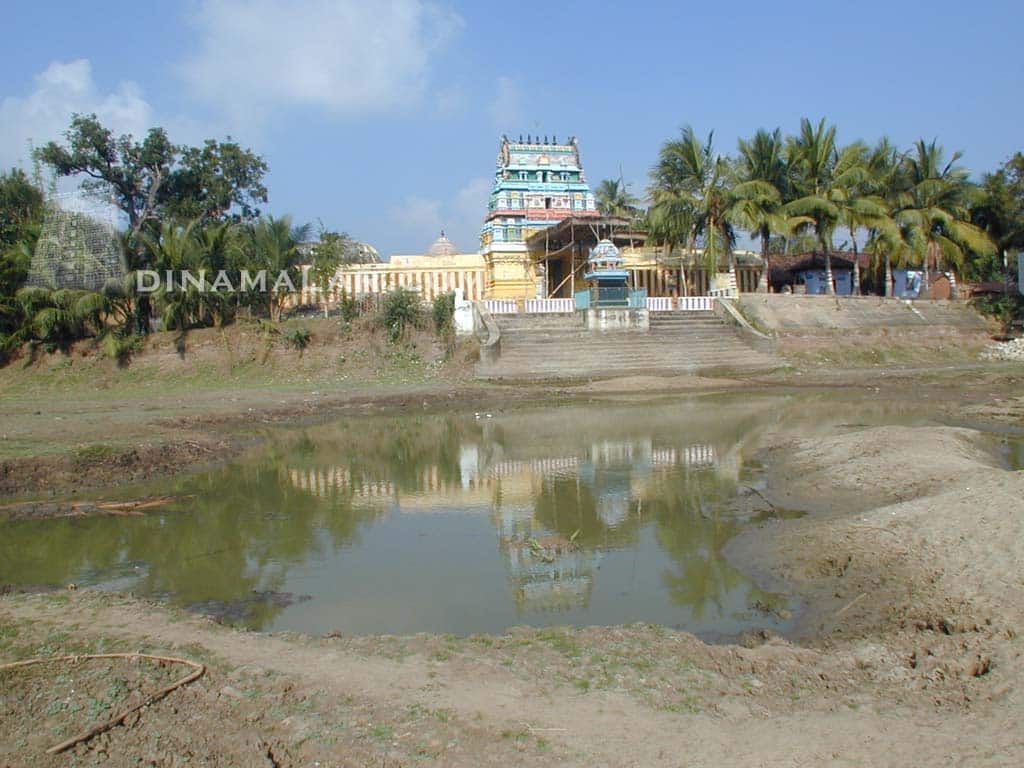 |
| TEMPLE POND |
Filled with lots of flowers the pond is very beautiful. On the shore of the pond is a sannidhi of Anjaneya. There lived a King, Swetha, who bathed in this pond and worshipped the Lord to remove his fear of early death and so this pond got this name. In Ikshvaku dynasty - of Sri Rama- there was a King Bindhumaran. His son was Swetha. It was predicted that this son Swetha would die at the age of 9; and as a remedy suggested by the family Guru sage Vasishta, Swetha was asked to take bath in this pond and worship the Lord, for a month. He did accordingly from Aippasi Shukla Dasami to Karthigai Shukla Ekadasi. The Lord appeared before him and asked what boon Swetha desired, who requested long life to serve the Lord. Vimanam is Swetha vimanam. Another name is Tatvadyodhaka vimanam [exposing the true entity].
 |
| SWETHA VIMANAM |
In sloka 14, the Lord describes how a Bhakta like the Alwar, worships and yearns for Him. In sloka 13, the Lord told how great devotees [mahatman] worship Him. We can notice a commonality in slokas 13, 14 and 15. All the three are explaining the greatness of devotees. Of these 13th sloka tells of one type of devotion and 14 and 15 slokas tell of another type. A devotee may request the Lord for material benefits or for Moksham. Former is inferior. It is like a commercial transaction. We will leave this type of bhakti. The other type is to request for Moksham as the end result. This is called sadhana bhakti. But, some perform bhakti and they do it for bhakti's sake. This is called sadhya bhakti or swayam prayojana bhakti [devotion for its own, that is for devotion itself]. That is even Moksham is not the goal, but bhakti for His pleasure. One leaves everything to Him and even Moksham, He will grant whenever He thinks it should be granted. Sloka 14 talks of Bhakti in its initial stage, while sloka 15 describes Bhakti at its fully matured stage. But, when we see the sloka 14, we will be wondering if the initial stage is like this, how to imagine the matured stage in sloka 15. This is the rating by the Lord. Sloka 14:
satatam kirtayanto mam
yatantas ca drdha-vratah
namasyantas ca mam bhaktya
nitya-yukta upasate
yatantas ca drdha-vratah
namasyantas ca mam bhaktya
nitya-yukta upasate
"Always chanting My glories, endeavouring with great determination, bowing down before Me, these great souls perpetually worship Me with devotion."
All these people upasate = worship [the Lord], with the purpose of, nitya yukta = being always with the Lord. Satatam = always, kirtayanta = singing and chanting His names, to heart content, mam = of Me [Sri Krishna], drdha vratha = with firm determination [that He alone is the Lord], yatanta = perform Archana, pooja, etc., namasyanta = prostrate to, mam = Me [Sri Krishna], bhaktya = along with devotion. With love or bhakti, these people with a determined firm belief, worship the Lord by singing His divine names, perform various poojas, prostrate, so that they will be with Him always. Here the Lord mentions activities a bhakta does: Keertanam [singing], yatnam [performing yagna and other pooja], namasyanta [prostrating], bhakti [ love] and nitya-yukta [always being with the Lord]. All these should be with a firm determination. This is the state of the bhakti in the initial stage. We are nowhere near this. But we publicise ourselves as devotees or bhaktas. While singing His names the voice would tremble and tears should flow like a stream. All flowers are meant for the Lord. Prostrating should be sashtanga; that is eight parts should be placed before the Lord [two hands, two legs, one head, mind, intellect and faith] on the ground. Such a bhakta is going to become a mahatman, says Sri Krishna.
(continued)
(continued)

